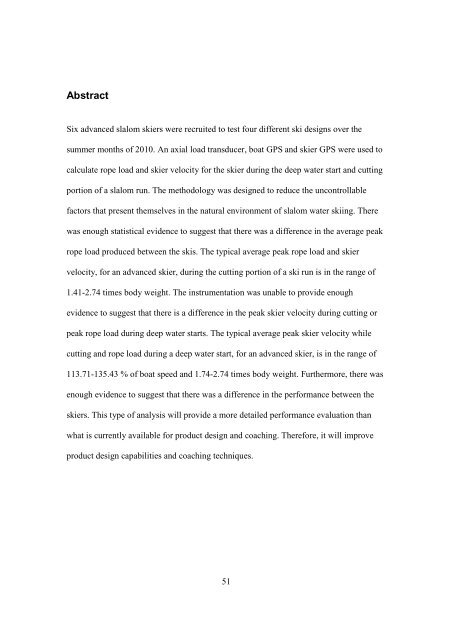Biomechanical P ... Slalom Water Skiing R1.pdf - Atrium - University ...
Biomechanical P ... Slalom Water Skiing R1.pdf - Atrium - University ...
Biomechanical P ... Slalom Water Skiing R1.pdf - Atrium - University ...
- No tags were found...
Create successful ePaper yourself
Turn your PDF publications into a flip-book with our unique Google optimized e-Paper software.
AbstractSix advanced slalom skiers were recruited to test four different ski designs over thesummer months of 2010. An axial load transducer, boat GPS and skier GPS were used tocalculate rope load and skier velocity for the skier during the deep water start and cuttingportion of a slalom run. The methodology was designed to reduce the uncontrollablefactors that present themselves in the natural environment of slalom water skiing. Therewas enough statistical evidence to suggest that there was a difference in the average peakrope load produced between the skis. The typical average peak rope load and skiervelocity, for an advanced skier, during the cutting portion of a ski run is in the range of1.41-2.74 times body weight. The instrumentation was unable to provide enoughevidence to suggest that there is a difference in the peak skier velocity during cutting orpeak rope load during deep water starts. The typical average peak skier velocity whilecutting and rope load during a deep water start, for an advanced skier, is in the range of113.71-135.43 % of boat speed and 1.74-2.74 times body weight. Furthermore, there wasenough evidence to suggest that there was a difference in the performance between theskiers. This type of analysis will provide a more detailed performance evaluation thanwhat is currently available for product design and coaching. Therefore, it will improveproduct design capabilities and coaching techniques.51
















